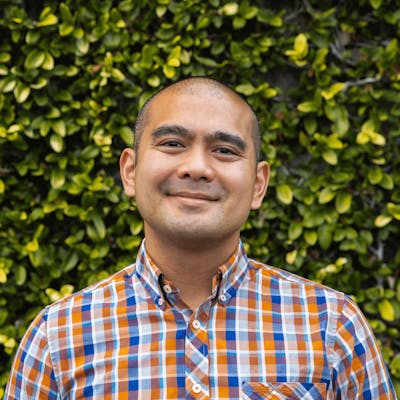
Photo by Priscilla Du Preez 🇨🇦 on Unsplash
I'd love to connect and discuss this role
Where AI is changing the face of technology, it’s also changing how people look for work.
Has it always been difficult to look for work? Summarizing your experience to concise bullet points and a cover letter that all speak directly to a job description and company mission, I doubt, is how anyone enjoys spending their day. However, many of us have been wearing cozy pajama bottoms while in that seat. Today, the job search game is different. Applying is not enough to stand out amongst the thousands of applicants applying for each role. How does somebody get noticed and at least considered for a role?
the cream rises to the top
Technology has allowed applicants to automate the sending of hundreds of applications a day. AI will help tailor your applications to the job description for you. Together, these can be a powerful toolset in job hunting. To be clear: when used properly, AI and automation can be your “work smarter” strategy. Get the AI prompts wrong, and suddenly new skills and bullet points appear on your resume unless you proofread. One may be surprised to learn they had worked collaboratively with a team in Iceland while speaking fluent Swahili using Cobol. Also, when enough people use AI, the applicant pool for every job gets more homogenous.
It is reductionist to say the issue with the job market is AI. Economic factors are making it difficult for startups to secure funding rounds, and layoffs from established companies are increasing the pool of candidates for roles. In short, we all suffer when there are too many resume submissions. Job seekers have difficulty being seen, even after optimizing resumes for an Applicant Tracking System (ATS). However, the ATS does not reject resumes, people do. Real, living people still review resumes. They may be sorted or filtered, but nothing is automatically rejected without knockout questions. We’re talking about questions like, “Are you able to legally work in the country you are applying for?”
The reality of applying via automated AI is that the bottleneck exists where a human still has to review resumes. Both applicants and hiring teams feel that pinch. So what do job seekers (and Hiring Teams) do when they race to apply for roles and face automation as John Henry did? There’s an adage accredited to the richest duck in Duckburg: “Work smarter, not harder.”
be that friend
In an analogy sure to make sense for people of a certain age, let’s revisit when going “clubbing” was a thing. Your resume is dressed for the club and there’s a line. Did it get in line before LinkedIn said, “Over 100 applications?” Yes? Waiting doesn’t seem so bad. The chances feel pretty good it will be read. Everyone else is waiting in line. Hang on, who’s walking up to the front of the line? They’re on a list and allowed in, and they brought a friend. Today’s job hunting advice is: be that friend, get a referral.
Job seekers have been leaning into networking and playing the professional version of Six Degrees of Separation. You ask a friend who works for a company with a role you’re interested in to refer you, and then you get your resume seen by the Hiring Department. It’s the perfect way to address a technology problem: be a human!
This method may be “old fashioned,” but in the ways I feel Work culture and human beings need to be in our Post-Pandemic world. Where we have been isolated and remote, maybe the hiring game should become just as much about having a talented team as it is about working to bring individual networks closer together. It may be the parent in me, but we learn the skills we need to go to work in grade school. Can you show up on time? Did you come prepared? Will you ask questions when things aren’t clear? Do you know how to share, advocate for yourself, and know when to do the right one?… ok, that one is still tricky as an adult and more so as a parent. Then, most importantly, can you work with others?
We re-humanize ourselves and the people around us when an old colleague says, “Would you be willing to give me a referral?” It’s reassurance that you are the kind of coworker someone would want to work with again. It’s a question asked with humility and given in the themes of camaraderie and community. It’s a question that only a person can act on, not AI.

